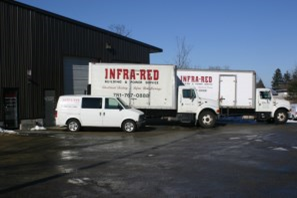 Emergency Service Restoration and Replacement of transformers and switchgear is a critical response strategy designed to minimize downtime, protect lives, and restore power following unexpected failures caused by equipment damage, natural disasters, fire, overloading, or aging infrastructure.
Emergency Service Restoration and Replacement of transformers and switchgear is a critical response strategy designed to minimize downtime, protect lives, and restore power following unexpected failures caused by equipment damage, natural disasters, fire, overloading, or aging infrastructure.
Emergency Service Restoration and Replacement: Overview
This process includes rapid assessment, repair, or replacement of damaged electrical assets — especially transformers and switchgear — to get power systems back online as quickly and safely as possible.
Common Emergency Scenarios:
-
Transformer explosions or oil leaks
-
Switchgear flashovers or arc faults
-
Flooding, fires, or lightning strikes
-
Overload and thermal breakdown
-
Cable insulation failure
-
Grid blackouts due to equipment collapse
Steps in Emergency Restoration
1. Rapid Damage Assessment
-
Visual inspection and thermal imaging
-
IR (Insulation Resistance), contact resistance, oil leak checks
-
Isolation of faulty equipment from the system
2. Mobilizing Emergency Support
-
Call Infra-red at 781.767.0888
-
Activate mutual aid or mobile replacement units
-
Deploy emergency stock transformers/switchgear (if available)
3. Safety First
-
De-energize affected area
-
Secure with proper grounding and lockout-tagout (LOTO)
-
Assess environmental hazards (e.g., oil spills or PCBs)
4. Restoration Options
-
Temporary bypass or backup feed
-
Mobile substation (for transformers)
-
Portable switchgear skids or outdoor assemblies
-
Emergency replacement from utility stock or rentals
5. On-Site Repair / Replacement
-
Install replacement unit or repair on-site
-
Perform basic commissioning tests (IR, turns ratio, contact resistance, etc.)
-
Reconnect loads carefully and energize
6. Post-Restoration Testing
-
Oil analysis (for transformers)
-
Insulation and dielectric testing
-
Protective relay checks
-
Functional verification under load
Transformer Replacement (Emergency)
| Activity | Details |
|---|---|
| Sourcing | From utility stock, rental, or mobile transformer provider |
| Transport | Crane, low-bed trailer, escort (if oversized) |
| Installation | Foundation check, grounding, oil filling, bushing installation |
| Commissioning Tests | IR, TTR, winding resistance, oil BDV, DGA |
| Energization | Gradual loading and thermal monitoring |
Switchgear Emergency Restoration
| Issue | Action |
|---|---|
| Burned-out breaker | Replace breaker or use spare cubicle |
| Flashover damage | Clean and re-insulate or swap panel |
| Arcing or insulation failure | Replace vacuum/gas interrupters |
| Control circuit failure | Quick rewiring or temporary manual operation |
Emergency Response Best Practices
- Maintain spare stock (transformers, breakers, relays)
- Identify critical load points and backup options
- Maintain up-to-date one-line diagrams and test reports
- Run emergency drills with technical teams
- Partner with Infra-red for 24/7 emergency support
Infra-red Support Includes
-
24/7 response
-
On-site testing & diagnostics
-
Replacement rental units
-
Oil filtration & reconditioning
-
Crane and rigging support

